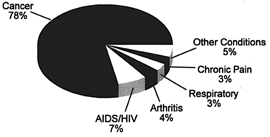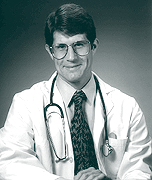Most NIH scientists wouldn't blink an eye at the prospect of a half-dozen new postdoc positions being created in the intramural program. But what if those postdocs are studying alternative medicine? Although many NIH researchers may find it difficult to accept the notion of even a small number of postdocs at the nation's leading biomedical research institution venturing into the realm of acupuncture, homeopathy, and herbalism, the head of the program, Wayne Jonas, says the move is no cause for concern. "The goal of the program is not to make a practitioner of alternative medicine. The goal is to expose them [the postdocs] to those areas so that they can begin to do good research," says Jonas, who became director of NIH's Office of Alternative Medicine (OAM) last summer. "We are not here to train natural healers. We are here to teach researchers." In fact, Jonas says he has received some positive feedback from scientists on all rungs of the intramural ladder-from fellows to scientific directors. "There have been a lot [of NIH scientists] who have approached me and said, 'We're excited that you're doing this. We'd be very interested in it,'" he says. Under the $440,000- to $590,000-per-year program to be initiated in July 1997, OAM will make use of its own Individual Research Training Award (IRTA) or individual National Research Service Award (NRSA) funds to cover salaries and benefits of five to seven intramural fellows per year. Project costs will be borne largely by ICDs, although OAM will provide approximately $15,000 per fellow per year.
Over the course of three years, alternative medicine postdoctoral fellows will be required to complete two or three research projects: one systematic review or meta-analysis plus clinical or basic science projects. Developing or coordinating two clinical investigations as well as teaching and giving lectures on their research projects flesh out the fellows' duties. The fellows will spend their first six months at NIH in the classroom, where they will be introduced to a variety of research methods and alternative-medicine practices through lectures, seminars, and teaching labs given by research scientists and practitioners of alternative medicine. The didactic sampling is only part of what Jonas terms a "liberal arts research education" designed not only to familiarize the postdocs with alternative-medicine terms but also to provide a sound underpinning for a successful research career by training the fellows in protocol development, statistical analysis, grant writing, critical appraisal of scientific literature, lab and clinical measurement techniques, and research design. The second half of the first year will focus on developing and structuring individual projects with the help of senior scientists. Year two will involve getting approval for and conducting research projects under the supervision of senior staff mentors and OAM. The final year is devoted to managing clinical investigations, giving lectures on alternative-medicine topics, and writing manuscripts. Any institute, center, or division that has a research effort that could benefit from having a postdoc interested in alternative medicine is encouraged to contact OAM (phone: 402-2466; e-mail: jonas@helix.nih.gov). Pat Mail, a public health analyst at NIAAA, says she sees potential applications for alternative-medicine research at her institution. "In addition to the 'traditional' therapeutic approaches to prevention and treatment of alcohol misuse, there are a number of approaches utilized by people in different cultures that might be beneficially explored," Mail says. "One example comes to mind: the adaptation of Western-style group process by American Indians in their alcohol-treatment programs. This adaptation is often referred to as 'Talking Circles,' which describes both the structure and the process of these therapeutic groups. ... In an increasingly multicultural society, our research should reflect reality, and alternative medicine is the umbrella under which cross-cultural solutions might be explored." Acknowledging that "good science" often has not been applied to alternative treatment strategies in the past, Jonas says he hopes that OAM's new focus on rigorous preliminary screening and selective funding of both intramural fellows and extramural research grant proposals will lead to a more solid foundation of knowledge about such therapies. "Good science is the way to separate the pearls from the mud," he says. In this era of limited resources for biomedical research, some may question the expense of sifting through a ton of alternative-medicine mud when mining more traditional veins of research may yield far greater therapeutic returns. However, Jonas is quick to point out that alternative medicine is an area of great interest to both Congress and the U.S. public, with one in three Americans reporting they have used some sort of alternative therapy. Jonas emphasizes that the intramural research program represents just a small fraction of OAM's activities. One of its biggest efforts is a phone-in clearinghouse to provide the public with descriptive information about alternative therapies and related research. The toll-free line (1 800 531-1794) averages 1,200 calls per month, with the greatest number of inquiries related to alternative therapies for cancer and acquired immune deficiency syndrome (see figures). Since its inception, OAM also has awarded 42 grants totaling $1.26 million to individual extramural researchers and, along with NIDR, NICHD, NCI, and the Office of Research on Women's Health, has awarded 10 three-year grants totalling $9.7 million to set up alternative-medicine research centers at extramural institutions. "It is the optimal goal of the Office of Alternative Medicine to foster both rigor and realism in complementary alternative medicine research," Jonas says. "It is our vision to bring together the best of healing and the best of science." |
||||||


